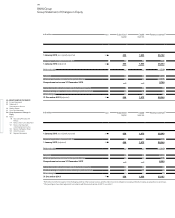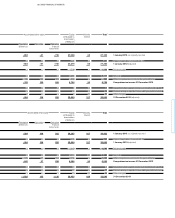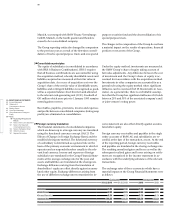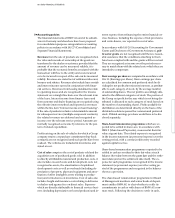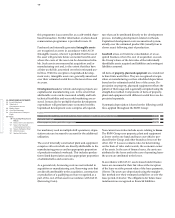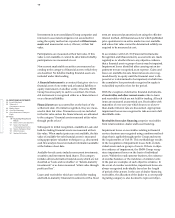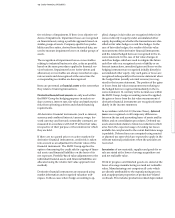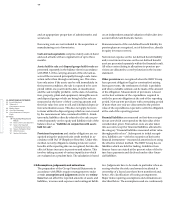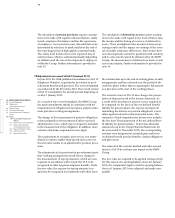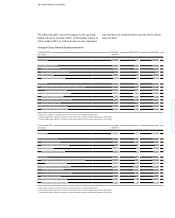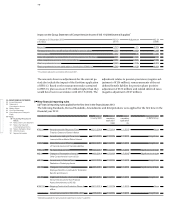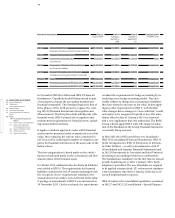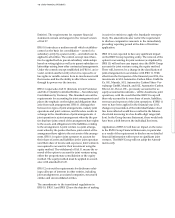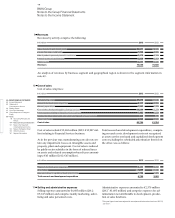BMW 2013 Annual Report Download - page 104
Download and view the complete annual report
Please find page 104 of the 2013 BMW annual report below. You can navigate through the pages in the report by either clicking on the pages listed below, or by using the keyword search tool below to find specific information within the annual report.
104
88 GROUP FINANCIAL STATEMENTS
88 Income Statements
88 Statement of
Comprehensive Income
90 Balance Sheets
92 Cash Flow Statements
94 Group Statement of Changes in
Equity
96 Notes
96 Accounting Principles and
Policies
114 Notes to the Income Statement
121 Notes to the Statement
of Comprehensive Income
122
Notes to the Balance Sheet
145 Other Disclosures
161 Segment Information
and an appropriate proportion of administrative and
social costs.
Borrowing costs are not included in the acquisition or
manufacturing cost of inventories.
Cash and cash equivalents comprise mainly cash on
hand
and cash at bank with an original term of up to three
months.
Assets held for sale and disposal groups held for sale are
presented separately in the balance sheet in accordance
with IFRS 5, if the carrying amount of the relevant
as-
sets will be recovered principally through a sale trans-
action
rather than through continuing use. This situa-
tion only arises if the assets can be sold immediately in
their present condition, the sale is expected to be com-
pleted within one year from the date of classification
and the sale is highly probable. At the date of
classifica-
tion, property, plant and equipment, intangible assets
and disposal groups which are being held for sale are
measured at the lower of their carrying amount and
their
fair value less costs to sell and scheduled deprecia-
tion / amortisation ceases. This does not apply, however,
to items within the disposal group which are not covered
by the measurement rules contained in IFRS 5.
Simul-
taneously, liabilities directly related to the sale are
pre-
sented separately on the equity and liabilities side of the
balance sheet as “Liabilities in conjunction with assets
held for sale”.
Provisions for pensions and similar obligations are rec-
ognised using the projected unit credit method in
ac-
cordance with IAS 19 (Employee Benefits). Under this
method, not only obligations relating to known vested
benefits at the reporting date are recognised, but also
the
effect of future increases in pensions and salaries. This
involves taking account of various input factors which
are evaluated on a prudent basis. The calculation is based
Assumptions, judgements and estimations
The preparation of the Group Financial Statements in
accordance with IFRSs requires management to make
certain assumptions and judgements and to use estima-
tions that can affect the reported amounts of assets and
liabilities, revenues and expenses and contingent liabili-
on an independent actuarial valuation which takes into
account all relevant biometric factors.
Remeasurements of the net defined benefit liability for
pension plans are recognised, net of deferred tax, directly
in equity (revenue
reserves).
Net interest expense on the net defined benefit liability
and / or net interest income on the net defined benefit
asset are presented separately within the financial result.
All other costs relating to allocations to pension
pro-
visions are allocated to costs by function in the income
statement.
Other provisions are recognised when the BMW Group
has a present obligation (legal or constructive) arising
from past events, the settlement of which is probable
and when a reliable estimate can be made of the amount
of the obligation. Measurement of provisions is based
on the best estimate of the expenditure required to
settle
the present obligation at the end of the reporting
period. Non-current provisions with a remaining period
of more than one year are discounted to the present
value of the expenditures expected to settle the obligation
at the end of the reporting period.
Financial liabilities are measured on first-time recogni-
tion at cost which corresponds to the fair value of the
consideration given. Transaction costs are also taken
into account except for financial liabilities allocated to
the category “financial liabilities measured at fair value
through profit or loss”. Subsequent to initial recogni-
tion, liabilities are – with the exception of derivative
financial instruments – measured at amortised cost using
the effective interest method. The BMW Group has no
liabilities which are held for trading. Liabilities from
finance leases are stated at the present value of the fu-
ture
lease payments and disclosed under other finan-
cial liabilities.
ties. Judgements have to be made in particular when as-
sessing whether the risks and rewards incidental to
ownership of a leased asset have been transferred and,
hence, the classification of leasing arrangements.
Major items requiring assumptions and estimations are
described below. The assumptions used are continuously
6


